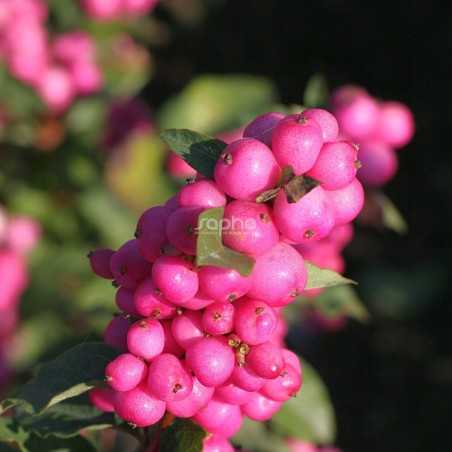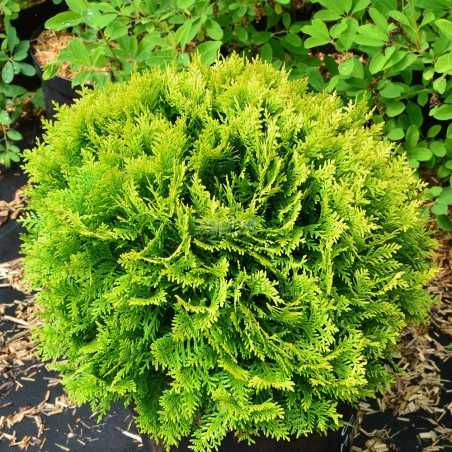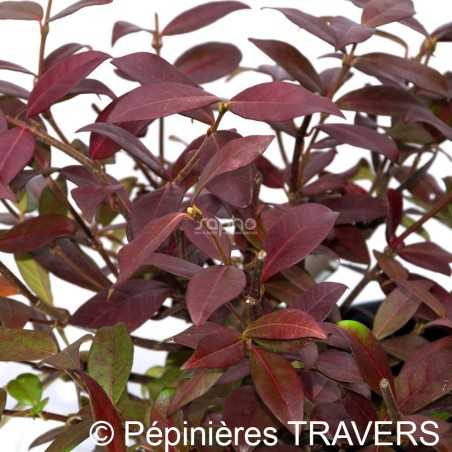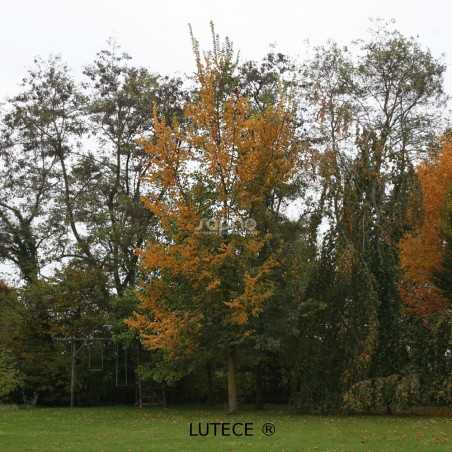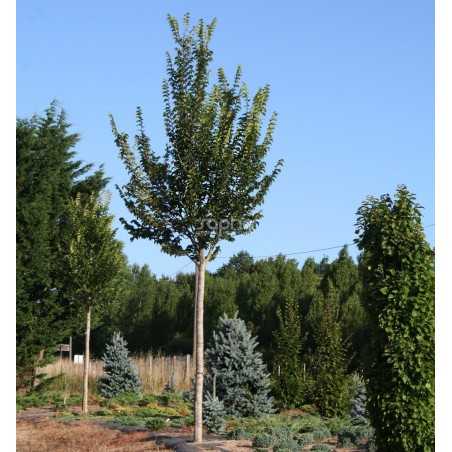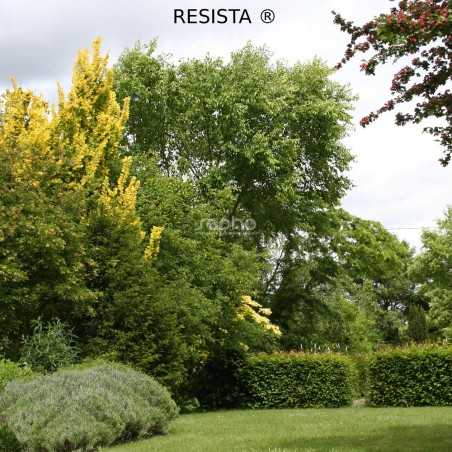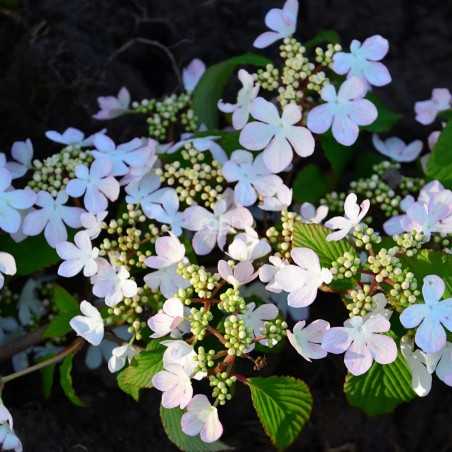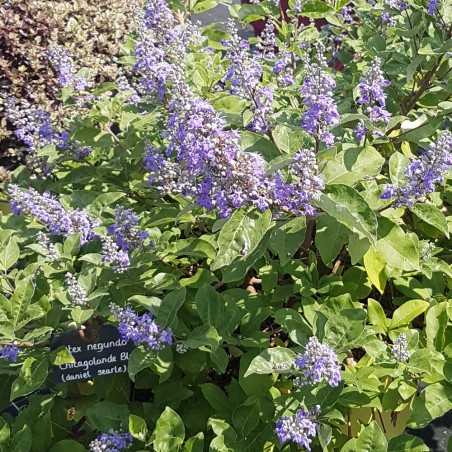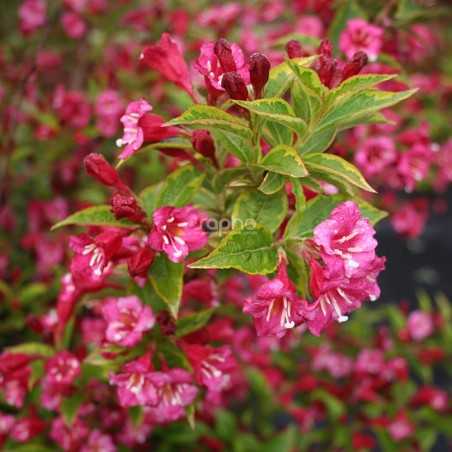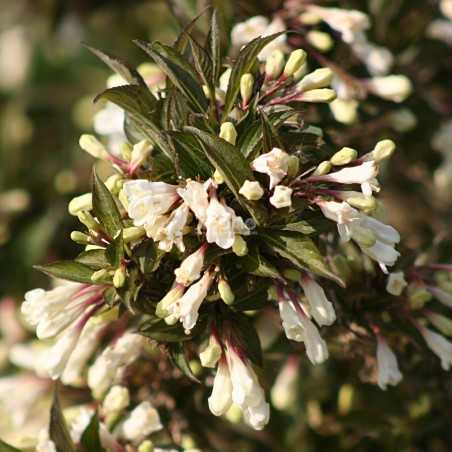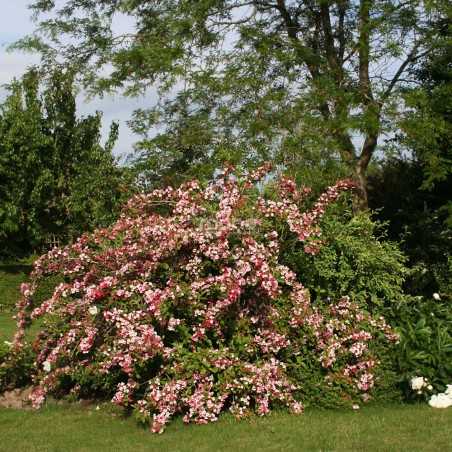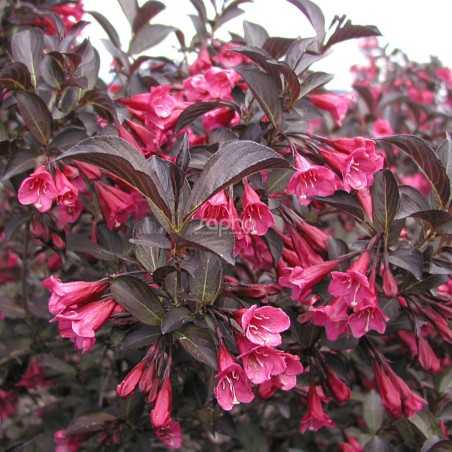Compact and floriferous, the snowberry with the deepest pink berries
This selection has all the characteristics of snowberries in the MAGICAL range.
While persistantly shiny, the berries of the Temptation variety are a deep pink, the darkest of the range.
MAGICAL® Temptation, Candy, Galaxy and Sweet, distributed by SAPHO, are very attractive bushes due to their abundant decorative fruit at the end of the season.
The hardy snowberry Magical® Temptation will adapt to all soil types and can be planted in low mixed hedges, singly in boxes or on terraces.
Filter By
Foliage
Position
Categories
Menu
All our varieties
A bright ball for pots and small spaces
The asset of the Thuja occidentalis 'Mirjam' is the colour of its foliage: bright yellow in the spring and persistent in the summer. In the autumn and winter it turns bronze green and orange.
Its regular and dense ball-shaped growth of about 60 cm in diameter on average, makes it attractive in pots, as well as in small spaces which it brings to life.
It is very hardy.
Trophies:
Bronze medal at Plantarium 2008 (Boskoop - NETHERLANDS)
Perfumed flowers in summer and a superb coral-red foliage in winter
In winter its stems and foliage acquire a pronounced, beautiful and decorative coral-red all through the height of the plant.In addition to its winter colours, Trachelospermum jasminoides Winter Ruby® has other advantages over typical jasmines. Its elegant foliage is livelier and brighter. It resists frost better (as low as -17°C), is more persistent and retains its leaves better which don't dry out in winter.Its generous white flowers bloom slightly earlier (between May and July in full sun, from June to September where it's partly shaded) and are all just as perfumed. It doesn't grow as tall (2 to 3 m) as typical jasmines (up to 5 m or more).For its compact form, its natural branching and abundant flowering, Winter Ruby® is an ideal variety for growing in pots with supports of 40 cm to 1.5 m.
Resistant to the Dutch elm disease, our towns and countryside have found the elm again.
Tested by INRAE, this hybrid is the result of cross fertilization of six French varieties, plus an English and a Chinese one. It is resistant to the Dutch elm disease. Its bark is smooth. The leaves are quite similar to the common elm tree: asymmetrically toothed, with a rough underside. The deep green foliage is dense. In the autumn it has a beautiful golden yellow tint. In March, before the leaves, grow discreet flowers in the shape of little red globules without petals. Its slender trunk gives LUTECE® a perfect aptitude for a high-stem training, better than Ulmus RESISTA® 'Sapporo Gold'; growing naturally its habit is regular and homogeneous. It also makes a very good shrub. It is fast growing. Perfectly adapted to landscape hedges, this cultivation is equally interesting planted in groups on an embankment for example, but also as individual tree or grown in line if it has been grown as a full standard. The name of LUTÈCE® was given to it in recognition of the help provided by Parks and Gardens Department of the city of Paris for having taken care of a field of experimentation in the Vincennes Park.
Excellent alignement tree resistant to Dutch Elm Disease.
Selected, tested and compared by INRAE, notably in a plantation in the Vincennes forest in Paris since 1983, this elm selection shows a good resistance to Dutch Elm Disease, and this without suffering damage through other agents, such as insects, pathogenes fungi or summer drought. The strong green foliage honeycombed, toothed and well veined is similar to the indigenous European elms. It is of upright growth, slimmer and higher than LUTECE®. VADA® has all the qualities of an excellent alignment tree, or planted individually.
For a country style hedge resistant to Dutch Elm Disease.
Natural hybrid between Ulmus pumilla and Ulmus davidiana var japonica, first discovered in the Sapporo Botanical Gardens, RESISTA® has undergone many tests by INRAE and the Service for the Protection of Plants. It has revealed to be resistant to the Dutch Elm Disease, which has ravaged the elms in our towns and countryside.
A very vigorous tree, it can reach 20 m high and 6 m wide in good growing conditions. It is slightly smaller than our traditional elms.
Its light green foliage turns golden yellow in autumn.
The first elm to be resistant to Dutch Elm Disease, it goes well in country style hedges without resembling the Ulmus glabra.
An avalanche of pinkish white flowers and a mountain of red fruit!
KILIMANDJARO® Sunrise presents In May an abundance of big, flat pinkish white inflorescences. A second, less abundant flowering period can follow, under appropriate conditions.
Very well fruit-bearing, at the end of the summer, it is covered in a ?mountain? of beautiful red shiny berries which later turn black.
The autumn foliage with yellow and red tints is also remarkable.
The shrub has a dense, pyramid-shaped and stepped habit; this variety is of a slower growth than KILIMANDJARO®, its leaves are smaller and darker.
This selection is well adapted for small gardens and can also been grown in pots.
Trophies:
RHS Chelsea Flower Show Plant of the Year 2015
A new hybrid chaste tree, created at the Chicago Botanical Garden, very resistant to cold
This very unusual shrub (wide and compact) has satin-finish foliage with a mix of round, simple and three-pinnate leaves.
Its long, dark-blue flowers are borne on darker stems. They are highly melliferous, attracting pollinators to your garden.
It is particularly resistant to pests, cold and drought, making it ideal for small gardens in sunny locations.
Variegated, even in sunlight.'Brigela' is the weigela with variegated green foliage, edged in creamy yellow, which keeps its qualities all summer long, even in full sun.This shrub with deciduous foliage is very vigorous, and upright. It reaches a height of 2.00 to 3.00 m and a similar spread.The dark red flowers in May - June on last year's branches are abundant.Due to its variegated foliage and its remarkable flowers, 'Brigela' is ideal in beds or open hedges, together with evergreens.
Small shrub with surprising contrasts: white flowers on dark foliage.This new variety, resulting from crossbreeding carried out by INRAE in Angers, is valued for its compact and dwarf form and for the contrast between its dark foliage and white flowers. BLACK AND WHITE® is the first Weigela variety with these remarkable characteristics.Of medium growth with very short internodes, this shrub stays within small dimensions.The deciduous dark green leaves gradually develop a pretty purple colouring through the seasons.In May - June, the ends of the branches are covered in bouquets of pure white trumpet- shaped flowers with a very attractive tapered purple-red base, a delicate reminder of the colour of the young leaves.BLACK AND WHITE® should be planted in pots or in small borders, together with perennials and low shrubs. It prefers a sunny position, but tolerates light shade.Trophies: Bronze Medal at PLANTARIUM 2009 (Boskoop - NETHERLANDS)
Red, pink, white, a carnaval in the garden.Compact and vigorous, CARNAVAL® grows to about 1.5 to 2 m. It does well when grown in containers.Its abundant and regular flowers in Mai - June are particularly attractive: on the same stem, the flowers can be pale pink to white or dark pink to red They have a diameter of 3 cm. It is a triploid variety, its flowering is therefore prolonged as it doesn't bear fruit.In a flowering hedge, in a shrub border or individually grown, CARNAVAL ® is very well suited for small gardens.
Spectacular contrast in May.'Alexandra' has beautiful deciduous dark purple foliage; it is the most purple among all the varieties of Weigela known to this day.This new variety is medium-sized and its form upright.'Alexandra' is very floriferous in May. The flowers are dark pink, contrasting with the very purple foliage.A cultivation to use in mixed hedges because of its decorative spring flowering and its purple coloured leaves until autumn.

